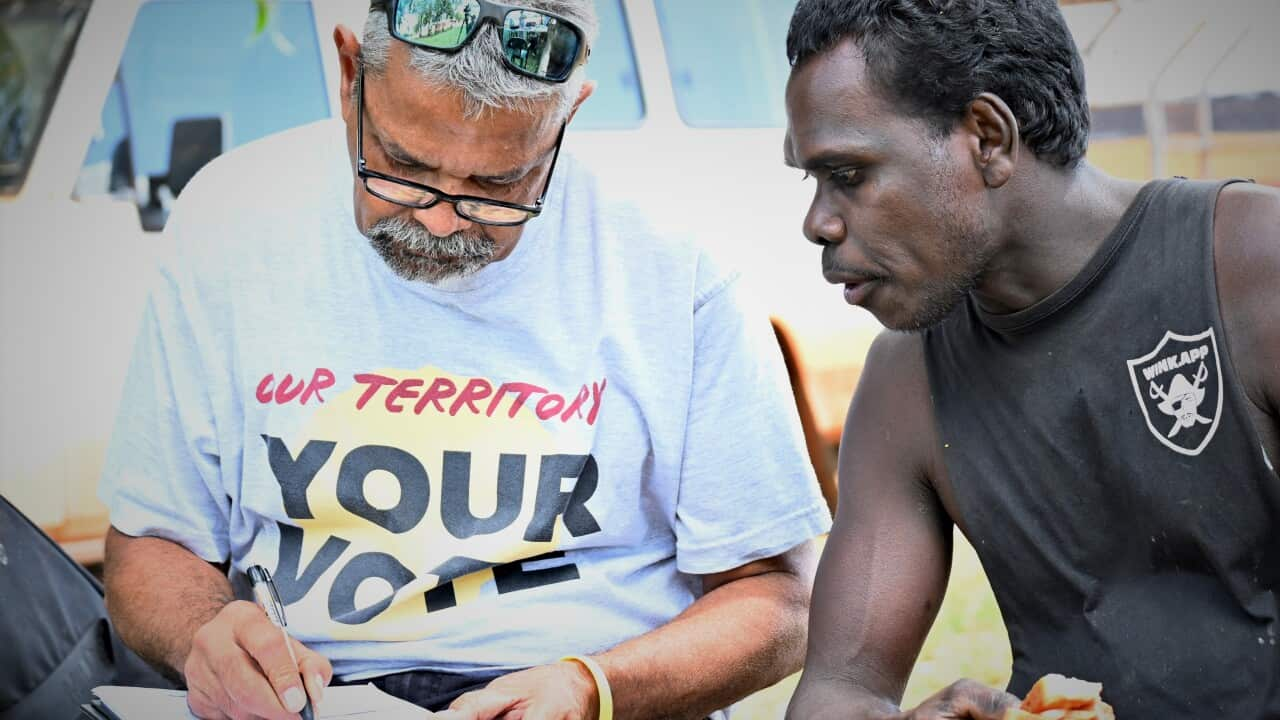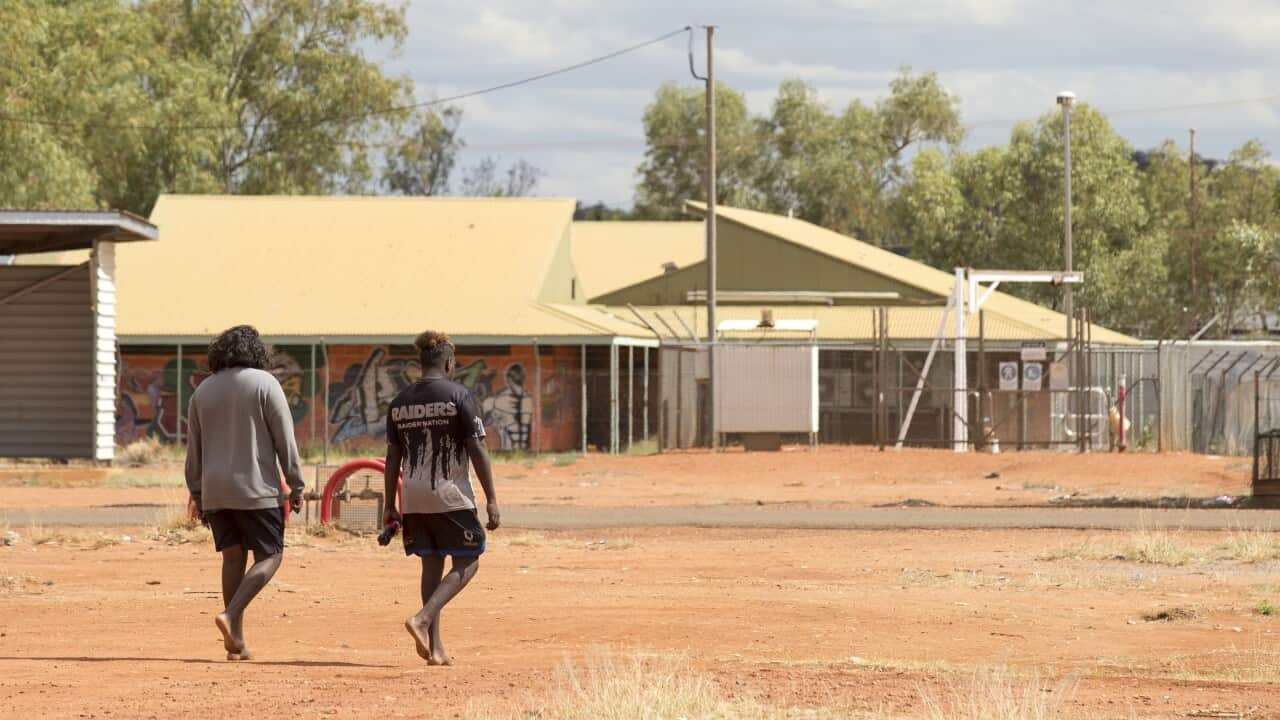Voting is compulsory for everyone in Australia, but not every eligible person has an equal opportunity to cast a ballot.
Since compulsory voting was introduced in 1925, voter turnout has typically hovered around 95 per cent.
Voter turnout — the proportion of those enrolled who cast a vote — has been decreasing since 2007. The 2022 election saw the lowest turnout in 100 years.
Voter participation was particularly low in remote communities, which is reflected in the Northern Territory seeing the lowest turnout of any state or territory.
In the NT, slightly over 73 per cent of enrolled voters cast a ballot, while the rate was more than 90 per cent in Victoria and NSW.
'Not being counted' like other Australians
Alex Morris, a spokesperson for the Australian Electoral Commission (AEC), told SBS News that the issue was present in several electorates that together cover "a lot of the inland region of Australia".
"We saw lower turnout in some of the most remote electorates around Australia ... We're talking [about] places like Lingiari in the Northern Territory and electorates like Durak and O'Connor in Western Australia," Morris said.
The seat of Lingiari recorded the lowest turnout rate in the country, with one in three enrolled voters not casting a ballot.
The seat has the highest proportion of Indigenous people of any electorate in the country.
Low voter turnout means thousands of Indigenous votes are being missed.
"The picture we get is that Aboriginal and Torres Strait Islander people are not being counted in the same numbers as other Australians are," Bill Browne, the director of the Australia Institute's Democracy and Accountability Program, told SBS News.
"The challenges of voting in a remote community are extensive," Browne said.
"It can include a lack of interpreters available ... and only a narrow window during which a mobile voting booth might actually be present in your local community."
'A tokenistic approach'
Voting in remote regions like Lingiari is mostly done through mobile polling stations.
Community leaders are calling for more flexibility to help voters in these areas access the pooling booths.
"Transportation is a big issue in our communities. Especially in remote communities that are very isolated, especially [in] the homelands that are very disadvantaged," Matthew Ryan, the Northern Land Council chair, told SBS News.
"They are obligated to make sure that every vote matters regardless [of] where they are."
In addition to logistical challenges, Ryan says that many people in remote communities have become disillusioned with politics and are "not motivated" to vote.
"The politicians are disconnected [from] the community issues ... The way I see [it], it's a tokenistic approach. You vote for me [and I] will probably do something for you. Maybe we come with a bank of promises, and there's nothing being delivered," he said.
"People lost trust [in] the government," says Ryan, adding that greater enfranchisement in remote communities would be empowering.
"Just imagine, if 4,000 people voted in this community, we would be very influential to the government," Ryan said.
"We want to see change. We want to make our community strong again, and more powerful again, and be heard."
The AEC says it's working to increase engagement in these remote areas.
Ahead of the election, 70 AEC remote polling teams will visit 480 locations across the country.
"The AEC is working with our Indigenous electoral participation program to have a community-led approach to not just educating locals about enrolment, but about turnout and participation in elections as well," Morris said.
"It's something that we're focusing on. It's something where we're working to improve our footprint and to get to more places than ever before."
Visit the to access articles, podcasts and videos from SBS News, NITV and our teams covering more than 60 languages.



